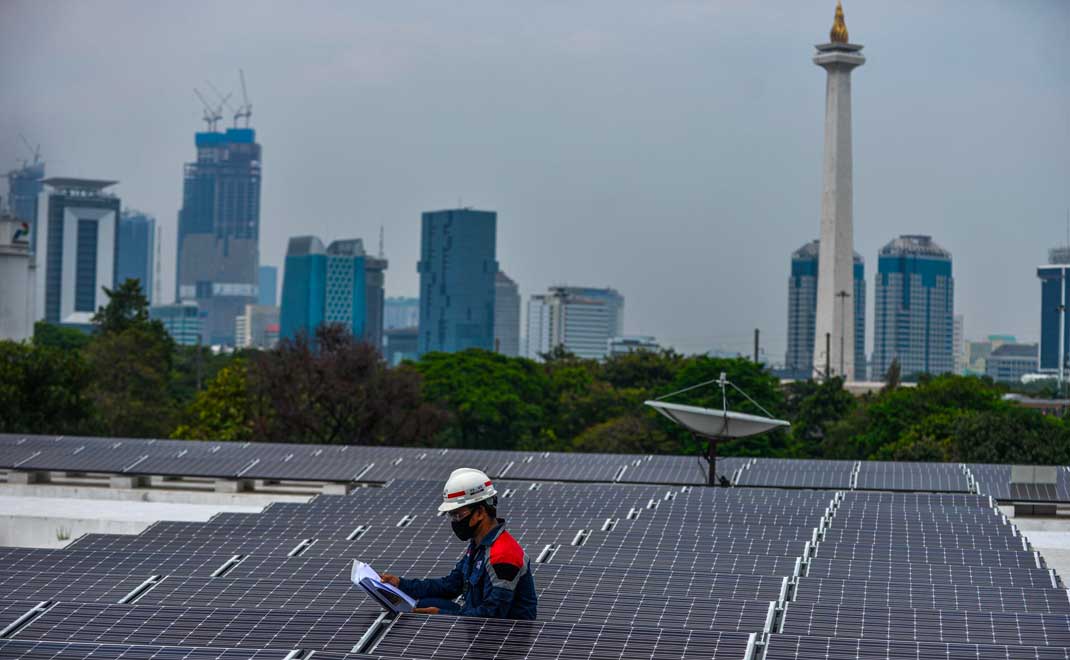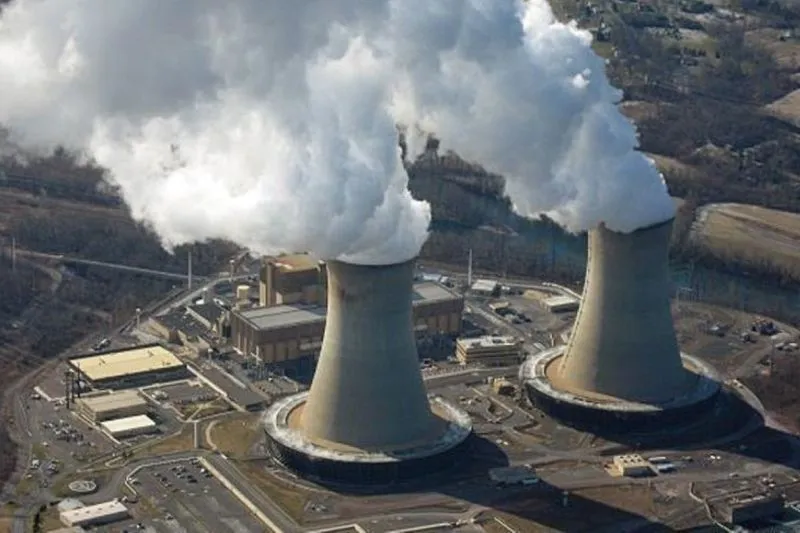
- These technologies face constraints in scalability due to geographical and logistical challenges in the vast archipelago.
- Many of Indonesia’s smaller islands lack developed transportation and energy networks
- Building nuclear power plants in seismically active areas heightens the risk of catastrophic accidents
Indonesia’s Energy Landscape and Nuclear Potential
Indonesia, the largest archipelagic country in the world with over 17,000 islands, faces unique challenges. To mention in its quest to develop a stable, sustainable, and reliable energy infrastructure. As the country seeks to reduce its dependence on fossil fuels and transition towards cleaner energy sources. Another sector is nuclear power emerges as a potential option.
However, Indonesia’s geography being situated on the Pacific “Ring of Fire”. It presents significant challenges, particularly with the associated seismic and volcanic activities. This analysis explores the feasibility and risks of nuclear energy deployment in Indonesia. Also within the context of its archipelagic geography and the heightened risk of earthquakes and tsunamis.
Energy Needs and Transition Goals
Indonesia is one of Southeast Asia’s largest energy consumers, with growing demand driven by rapid industrialization and population growth. Currently, the country relies heavily on coal, oil, and natural gas, which account for a large portion of its energy generation.
The government has committed to reducing carbon emissions and transitioning towards RE, including solar, wind, and hydropower. But these technologies face constraints in scalability due to geographical and logistical challenges in the vast archipelago. Nuclear energy could provide a stable, high-output, low-carbon source of power that helps meet Indonesia’s growing electricity demand.
Given its energy density, nuclear power can supply baseload electricity. It providing continuous power unlike some renewable sources that are intermittent (solar and wind). Furthermore, as the global shift towards decarbonization accelerates, Indonesia’s consideration of nuclear energy fits into a broader strategy to meet its carbon reduction targets as outlined in the Paris Agreement.

Geographical and Logistical Challenges of an Archipelagic Nation
One of the key challenges in building nuclear power plants in Indonesia lies in the country’s geographical characteristics. With its islands dispersed over a vast area, the infrastructure requirements for nuclear plants. Such as transportation of materials, energy grid development, and safety protocols, become significantly more complex.
Nuclear power plants require substantial infrastructure not only for construction but also for the ongoing delivery of nuclear fuel and nuclear waste. In an archipelagic nation, ensuring that such infrastructure is in place across various islands is challenging. Many of Indonesia’s smaller islands lack developed transportation and energy networks. Meaning that building a nuclear plant on these islands may require additional investments in supporting infrastructure.
Moreover, the centralized nature of nuclear power plants contrasts with the decentralized energy generation needs of Indonesia’s islands. While nuclear plants provide high output, they are less adaptable to smaller, localized grids that many of Indonesia’s islands currently rely on. In this sense, the deployment of nuclear energy might be more suited to larger islands. Such as Java, Sumatra, or Sulawesi, where energy needs are concentrated, and infrastructure is more advanced.
Seismic and Volcanic Risks: Ring of Fire Vulnerabilities
Indonesia’s location on the Pacific Ring of Fire, where several tectonic plates converge. It makes the country particularly prone to seismic activity. Earthquakes, tsunamis, and volcanic eruptions are frequent, raising significant concerns about the safety and stability.
Building nuclear power plants in seismically active areas heightens the risk of catastrophic accidents. Such as reactor meltdowns, which could lead to widespread environmental and human damage. Countries like Japan has same condition, have experience managing nuclear power in such conditions, but the risks are high.
Baca Juga:
- Gali Potensi PLTN di Indonesia Pasca Tragedi Nuklir Fukushima
- Indonesia’s Trans Java Toll Could Boost Clean Energy Mix
The 2011 Fukushima disaster, triggered by an earthquake and tsunami, highlighted the potential dangers of nuclear in seismically active regions. In Indonesia, any such incident could be even more catastrophic given the dispersion of its population across islands. Many of which have limited emergency response capabilities and infrastructure.
Additionally, Indonesia has hundreds of active volcanoes, further complicating site selection for nuclear power plants. Volcanic eruptions can result in ash clouds, pyroclastic flows, and other hazards that could disrupt or damage critical infrastructure. While modern nuclear reactors are designed with various safety systems to withstand natural disasters. But the risks posed by Indonesia’s extreme geological volatility remain a serious concern.

Safety and Regulatory Concerns
The establishment of nuclear power requires robust regulatory frameworks, safety protocols, and a highly skilled workforce. Indonesia’s experience in managing large-scale nuclear projects is limited, cause the skills is about coal sectors. Which could pose challenges in ensuring compliance with international safety standards.
The training of personnel, maintenance, stringent safety procedures would need to be at the forefront of any nuclear energy program. Moreover, Indonesia would need to ensure that it has the capacity to handle nuclear waste.
Which remains hazardous for thousands of years and being concern to public domain. In an archipelagic setting, transporting nuclear waste across islands could present additional risks. Particularly in the event of maritime accidents or other unforeseen disruptions.
Alternatives And The Role Of Nuclear In The Energy Mix
While nuclear energy could play a role in Indonesia’s energy transition, it must be considered alongside other renewable options. Geothermal energy, for instance, holds significant potential in Indonesia due to the country’s volcanic activity.
Indonesia is already one of the world’s largest producers of geothermal power. Expanding this capacity could provide a viable, safer alternative to nuclear energy. Solar and wind power, while more intermittent, can also be expanded in combination with battery storage systems to provide reliable power.
Baca Juga:
- Nuclear: Clean Energy Could Be Hero For Indonesia From Coal Mining Disaster
- Indonesia’s New President Has A Military Background, Will Nuclear Become Energy?
Additionally, Indonesia could explore the development of small modular reactors (SMRs). Which are designed to be safer and more flexible than traditional large reactors. small modular reactors could potentially be deployed in smaller, more remote locations.
Also might offer a middle ground between large-scale nuclear power and more localized renewable energy solutions. These reactors are designed to withstand seismic activity and could offer a safer, more adaptable form of nuclear energy that aligns with Indonesia’s unique geographical and seismic profile.

Conclusion
In conclusion, while nuclear energy offers a promising low-carbon energy source that could help Indonesia meet its growing energy demands. But significant challenges remain due to the country’s archipelagic geography and seismic risks. The logistical challenges of building and maintaining nuclear plants across dispersed islands.
Combined with the high risk of earthquakes and volcanic eruptions, raise serious concerns about the feasibility and safety of nuclear energy in Indonesia. However, with the right technology, regulatory frameworks, and safety measures, nuclear energy could still play a role.
Particularly on larger islands with advanced infrastructure that could support renewable energy. Exploring advanced technologies like SMRs and focusing on other renewable sources. Such as geothermal could provide safer and more suitable alternatives for Indonesia’s energy future.
#zonaebt #sebarterbarukan #ebtheroes
Editor: Savira Oktavia



Comment closed